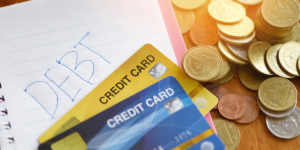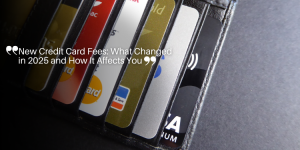Moneywatch: Mastering Credit Card Debt Forgiveness in May 2025

Essential Strategies to Prepare for Potential Credit Card Debt Relief and Regain Financial Control
Introduction: Navigating the Complex Landscape of Credit Card Debt Forgiveness
As credit card debt levels soar to unprecedented heights—with many Americans carrying balances amounting to thousands of dollars—concerns about managing repayments amid soaring interest rates have intensified.
The average credit card interest rate currently exceeds 20%, compounded by relentless interest accumulation that can make debt feel insurmountable.
In this uncertain economic environment—characterized by volatile stock markets, persistent inflationary pressures, evolving interest rate policies, and fluctuating consumer confidence—many individuals are exploring viable debt relief options.
Among these, credit card debt forgiveness programs have emerged as a beacon of hope, offering the potential to reduce outstanding balances significantly.
It lays out practical steps for preparing to qualify and maximize the benefits of these programs, recognizing that forgiveness is neither automatic nor instantaneous but requires strategic planning and informed action.
Understanding Credit Card Debt Forgiveness: What Is It and Who Can Benefit?
Credit card debt forgiveness refers to programs or arrangements wherein lenders agree to reduce the borrower’s outstanding principal balance, sometimes by 30% to 50%, depending on the debtor’s financial situation and negotiations.
This reduction can alleviate the burden of unaffordable debt, providing a pathway toward financial freedom.
However, eligibility for such programs is contingent on meeting specific criteria, which often include:
- A minimum debt threshold (commonly $5,000 to $10,000)
- Evidence of missed or late payments
- Proof of financial hardship, such as loss of income, medical emergencies, or other circumstances impairing the ability to pay
These programs can be a lifeline for many, but it is vital to approach them with realistic expectations and thorough preparation.

Step 1: Grasping the Economic Realities Behind Your Debt
In the current economic context, relying on potential improvements such as Federal Reserve interest rate cuts to reduce credit card debt may be unrealistic and even risky.
This is primarily because credit card interest rates are typically pegged to the prime rate, which does not always move in tandem with the federal funds rate adjusted by the Fed.
Moreover, with rates consistently above 20%, even substantial rate reductions in other economic sectors would have minimal effect on your accrued interest and total debt load.
Meanwhile, continued use of credit cards without a repayment strategy can cause your balance to balloon due to compounding interest.
Therefore, waiting passively for external economic shifts is generally unwise.
Instead, taking proactive steps toward debt forgiveness or relief programs now can help you regain control over your financial health.
Start exploring your credit card debt relief options today to position yourself advantageously for any upcoming forgiveness initiatives this May.
Step 2: Assessing Your Eligibility for Debt Forgiveness Programs
Eligibility for credit card debt forgiveness is typically governed by strict criteria established by lenders or third-party debt relief services.
The most common requirements include:
- Minimum Debt Amount: Most programs require that you owe at least between $5,000 and $10,000 on your credit cards to qualify.
- Payment Delinquencies: Being behind on payments or having accounts in default often strengthens your case for forgiveness.
- Demonstrated Financial Hardship: Applicants must provide documentation proving financial difficulties such as unemployment, reduced income, medical bills, or other adverse events that impair their ability to pay.
If these conditions are not fully met, alternative debt relief strategies may be suggested instead.
These include balance transfer credit cards with introductory zero-percent APR offers, debt consolidation loans that combine multiple debts into one manageable payment, debt management programs administered by credit counselors, or financial education resources.
It is critical to review the eligibility criteria carefully before applying, ideally during April, so that you can prepare your documentation and financial information ahead of any formal forgiveness program deadlines in May.
Step 3: Consulting Financial and Debt Relief Professionals for Tailored Guidance
Given the complexity and variability of credit card debt forgiveness programs, personalized advice from professionals is invaluable.
Financial advisors and certified debt relief experts can evaluate your unique financial circumstances, credit standing, and long-term goals to craft a customized approach.
Factors influencing your eligibility or the suitability of forgiveness versus other debt solutions can vary significantly between lenders and service providers.
Furthermore, rapidly shifting economic conditions may affect your financial health week-to-week, necessitating adaptive strategies.
By consulting with qualified professionals, you will gain clarity on:
- Which forgiveness programs you are most likely to qualify for
- Alternative pathways if forgiveness is not immediately available
- Steps to improve your financial situation while pursuing debt relief
Remember, climbing out of a debt hole often requires collaborative effort.
Expert guidance can prevent costly mistakes and accelerate your journey toward financial stability.
The Long-Term View: Realistic Expectations About Credit Card Debt Forgiveness
While the prospect of reducing your credit card debt by up to half is appealing, it is crucial to understand that debt forgiveness is not an instant fix.
These programs often unfold over months or years, involving negotiation, documentation review, and payment restructuring.
Credit score implications are almost inevitable.
Forgiveness can lead to a temporary decrease in credit ratings because forgiven debts may be reported as settled for less than full balance or charged-off accounts.
However, with responsible financial behavior post-forgiveness, credit recovery is achievable.
Proactively preparing for this journey is essential.
This preparation includes budgeting for potential program fees, setting realistic timelines for debt resolution, and planning for rebuilding creditworthiness through consistent payments and financial discipline.
Additional Strategies to Support Credit Card Debt Relief Efforts
Beyond the three key steps outlined above, several complementary strategies may enhance your ability to manage or reduce credit card debt:
- Creating a Detailed Budget: Establish a clear monthly budget that prioritizes debt repayments and minimizes discretionary spending.
- Negotiating Directly With Creditors: Sometimes, creditors may offer hardship programs or settlement options without formal forgiveness programs.
- Utilizing Debt Snowball or Avalanche Methods: These repayment techniques focus on paying down debts strategically to reduce interest costs or eliminate accounts faster.
- Seeking Credit Counseling: Nonprofit agencies can provide financial education and assist with debt management plans.
- Avoiding New Debt Accumulation: Cease or severely limit credit card usage to prevent the balance from increasing.
Integrating these practices with formal debt forgiveness preparations will maximize your chances of success.
The Bottom Line: Taking Control of Your Financial Future Starting Now
Credit card debt forgiveness represents a powerful tool in the arsenal against unmanageable debt, but it requires deliberate action, patience, and informed decision-making.
Those contemplating this path should begin preparations well in advance of program application windows, ideally by April or early May 2025.
By understanding the economic context, verifying eligibility, and seeking expert advice, you will be better positioned to leverage forgiveness opportunities effectively.
Simultaneously, maintaining a comprehensive debt management plan will mitigate negative credit impacts and set the stage for long-term financial health.
Ultimately, debt forgiveness is a stepping stone—not a destination. Success depends on commitment, preparation, and ongoing financial responsibility.
FAQs About Credit Card Debt Forgiveness
Q: Will all my credit card debt be forgiven?
A: No. Typically, forgiveness programs reduce your balance by 30% to 50%, depending on your financial situation and negotiations.
Q: How long does the debt forgiveness process take?
A: The process can take several months to years, depending on program complexity and creditor response.
Q: Will debt forgiveness harm my credit score?
A: It often leads to a temporary drop in your credit score, but responsible management afterward can aid recovery.
Q: What if I don’t qualify for forgiveness?
A: Alternatives such as debt consolidation loans, balance transfer cards, or credit counseling may be recommended.
Q: Can I apply for debt forgiveness on multiple credit cards?
A: Yes, but each creditor’s policies differ, so professional guidance is advised.
| Resource | Details |
|---|---|
| 💻 Online Debt Relief Calculators | Estimate potential savings and timelines to get a clearer picture of your debt relief options. |
| 📊 Credit Report Access | Review your credit status for accuracy and readiness to take action toward debt relief. |
| 🏢 Financial Counseling Agencies | Explore certified nonprofit services near you that can offer guidance and support. |
| 🔍 Debt Forgiveness Program Listings | Research reputable service providers with transparent terms to ensure you make informed decisions. |







